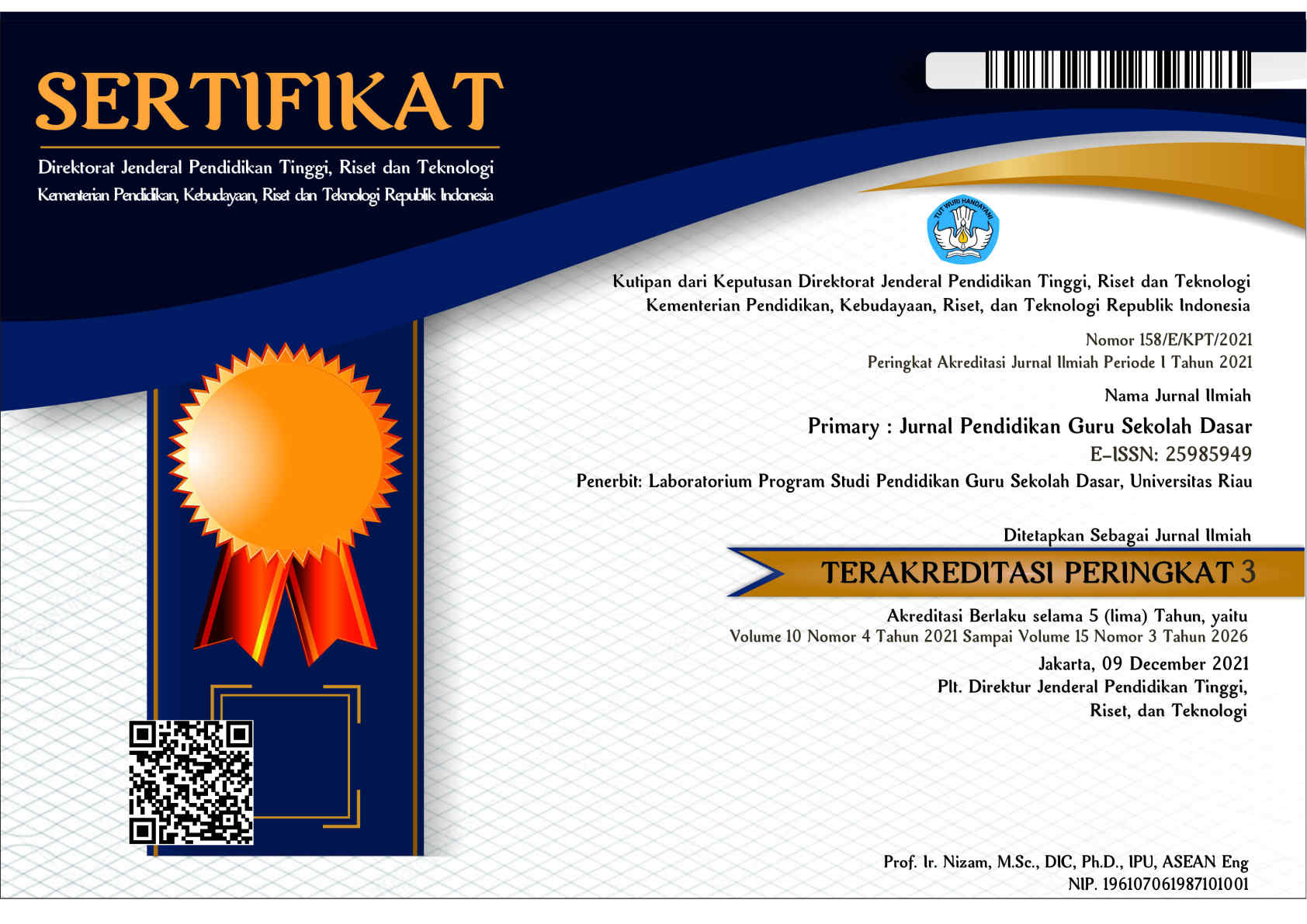PENGEMBANGAN MEDIA PEMBELAJARAN PANGGUNG SIKLUS HIDROLOGI PADA MATA PELAJARAN IPA DI KELAS V
Abstract
This study aimed to reveal how to develop the water cycle stage media for science learning at grade V, to analyze the feasibility of water cycle stage media developed for science learning at grade V, and to reveal the students’ response to the water cycle stage learning media. This study was conducted at SDN Teras 1. The subjects of this study were 20 students at grade V SDN Teras 1, in which 15 students were on a limited trial. This study was conducted based on Borg and Gall model modified by Sugiyono. This model included six stages: namely problem analysis, data collection, product design, design validation, design revision, and product testing. The instruments in this study were questionnaire sheets which were addressed for the lecturer and students. Based on the result of data analysis, it was found that the quality of the water cycle stage media was presented in three categories. First, the feasibility of water cycle media from the media experts was categorized as very feasible with a percentage of 91.3%. Then, according to the material experts, this media was alo categorized as very feasible with a percentage of 93%. Finally, the feasibility result from education experts was also categorized as very feasible with a percentage of 93%. In addition, after conducting the trial to 15 students, the result of the students’ response to the water cycle stage media was 89%, which was also in the very feasible category.
Keywords
Full Text:
PDF (Bahasa Indonesia)References
Basri, H. & Rusdiana. (2015). Manajemen Pendidikan & Pelatihan. Jakarta: Pustaka Setia.
Daryanto. (2010). Media Pembelajaran. Yogyakarta: Gava Media.
Indriana, D. (2011). Ragam Alat Bantu Media Pengajaran. Jakarta: PT. Diva Press.
Kiswandari, S. (2016). Pengembangan Media Pembelajaran Diorama Daur Air Pada Mata Pelajaran IPA Kelas V SD. Jurnal Elektronik Mahasiswa Prodi PGSD Universitas Negeri Yogyakarta (BASIC EDUCATION), 5 (10) 970-975).
Kochhar, S. K. (2008). Pembelajaran . Jakarta: Gramedia Widiasarana.
Kustadi, C. & Sutjipto, B. (2011). Media Pembelajaran. Jakarta: Ghalia Indonesia.
Prastowo, A. (2015). Panduan Kreatif Membuat Bahan Ajar Inovatif. Yogyakarta: Diva Press.
Purwanto. (2010). Evaluasi Hasil Belajar. Yogyakarta: Pustaka Pengajar.
Sadiman, A. (2011). Media Pendidikan Pengertian, Pengembangan, dan Pemanfaatannya. Jakarta: PT Graha Grafindo Persada.
Sanaky, H. (2015). Media Pembelajaran Interaktif-Inovatif. Yogyakarta: Kaukaba Dipantara.
Sudjana, N. & Rivai, A. (2013). Media Pengajaran. Bandung: Sinar Baru.
Sugiyono. (2012). Metode Penelitian Kombinasi (Mixed Methods). Bandung:Alfabeta.
(2015). Metode Penelitian Pendidikan. Bandung: Alfabeta.
(2013). Metode Penelitian Kuantitatif, Kualitatif, dan R&D. Bandung: Alfabeta.
Tritanto. (2010). Model Pembeljaran Terpadu. Jakarta: Bumi Aksara.
Wisudawati, A.W. & Sulistyowati, E. (2014). Metodologi Pembelajaran IPA. Jakarta: Bumi Aksara.
DOI: http://dx.doi.org/10.33578/jpfkip.v9i6.8049
Refbacks
- There are currently no refbacks.
Copyright (c) 2020 Annisa Wijariyah, A Syachruroji, Nana Hendracipta

This work is licensed under a Creative Commons Attribution-NonCommercial-ShareAlike 4.0 International License.
____________________________________________________________
Primary: Jurnal Pendidikan Guru Sekolah Dasar
Secretariat
Program Studi Pendidikan Guru Sekolah Dasar
Gedung B1, FKIP Universitas Riau
Kampus Bina Widya Km. 12,5 Simpang Baru Panam
Pekanbaru Riau Indonesia 28293
e-mail : primary@ejournal.unri.ac.id



